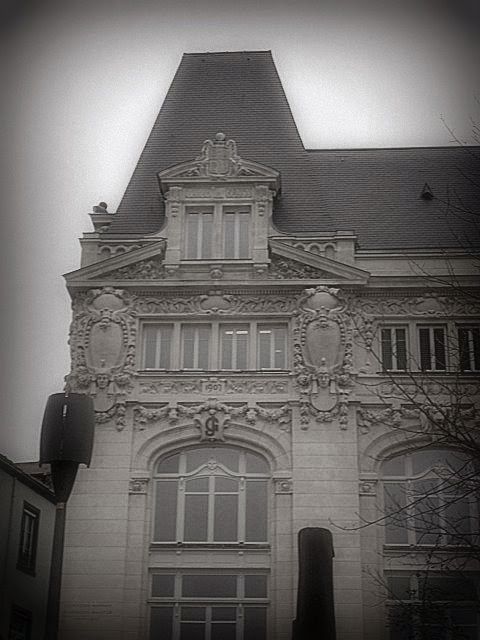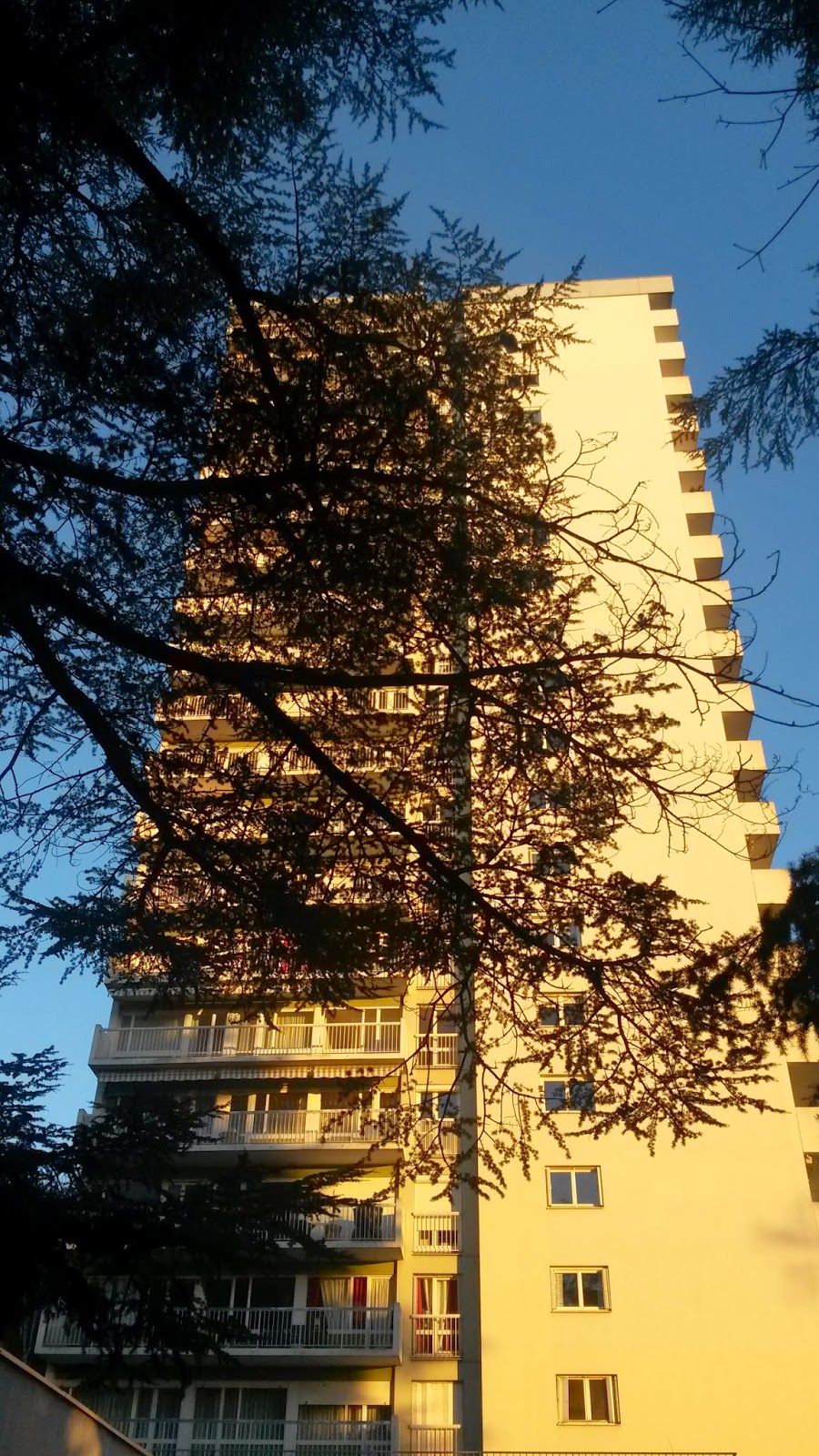Top photo:
I
took this photograph on the 19th February 2015 in Châteaugay, the place where I
live, at the castle, next to the old village center. At that moment, what I saw
was the castle of course, but also some people who looked weird and, I think,
not quite sober… There were old houses which had broken shutters. As it was 7 o'clock in the evening, I heard the sound of the church bells just next to the castle,
in the same square. I also heard the weird people; they were talking about the
village news. I didn't smell anything because I had a cold on that day! But,
even if I couldn't smell anything, I could feel the very cold wind. I felt
scared because it was dark and strange, and I couldn't wait to leave this place
which was not very pleasant.
The
best name I found to illustrate my photo is “A light in the dark”, because
there is a light in the middle of my photo which is very dark, and I think it
is quite artistic!
At
the bottom of the picture, there is a path leading to the castle entrance. On
the left of this path, there is a circular tower made of stone with a little
door at its bottom. Next to the tower and in the middle of the picture, there
is an old dilapidated little house. It has a white door, a chimney, a gutter
and a very little window (which looks like a microwave oven), there is also a
black bin in front of the house. In the background, there is the castle tower
(the dungeon) which has a gargoyle and crenellations on its top. Then, on the right
of the path, there is another strange house with stairs to reach the entrance.
In the foreground side of this strange house, we can see another gutter, mould,
and a sign of the path’s name. In the middle of the picture, there is a yellow
light which illuminates the path. But we can also notice the blue sky, an
electric wire and a generator.
I
know that the castle’s dungeon dates back to the 14th century. The castle is
now called “Châteaugay”, but it was first baptized “Vigosche castle”. This gay
castle has nevertheless witnessed several sordid affairs such as the time when
Pierre II de Giac poisoned his wife, the mistress of Jean Sans Peur, in 1426.
This
place is an historical symbol which represents the village. Nowadays, it’s not
the popular center where everybody goes, because it inspired fear and disgust
as it is dark and quite dirty. To my mind, this place has two sides: a positive
one and a negative one. It is positive because without the castle, my town has
nothing special to offer. But it’s also negative because as I said, it inspired
fear and disgust.
Bottom photo:
I
took this photograph on 21st February 2015 in Cébazat, at the Semaphore, next
to the music school, at approximately 11 am. What I saw there was the music
school, the Semaphore, some artists who were probably coming to prepare their
show and a dog with its owner. I heard a jazz band and the dog barking. I smelt
the rain coming, so I was a little bit in a hurry as I didn't want to get wet.
The temperature was about 8°C and it was windy.
I
could give my photo “Music Lines” as a title, because the place refers to
music, and the picture is full of different lines.
There
is tarmac on the lower half of the picture, with posts of different sizes which
make half of a roundabout around the Semaphore’s arch. The arch is made of a
blue curved column pierced with three circles of different sizes. It is
attached to the sign of Semaphore. Then, at the middle distance, there is the
building of the Semaphore. It is grey, blue and white, and its architecture is
full of lines, as for example the blue ones, which are all around the main
building. We can also see, in the background, a sky full of dark clouds, which
announce the rain. On the left side, there is a bin (only for dogs) and on the
other side, next to the arch, there are three posts which are supposed to have
flags on them, but they didn’t at the time the photo was taken.
The
Semaphore is a concert hall and a theater room. It was inaugurated in 1998 and
it can contain more than 500 persons. It also where the festival “Semaphore en
chanson” is held each year.
The
photo says that it is a very "cultural" place, a meeting point for a lot of
artists, and more particularly musicians. It’s also a place of relaxation and
pleasure for the audience. The architecture of this place is based on lines:
everything is very linear, from the buildings to the posts. To my mind it gives
positive feelings about the city because it depicts a modern and cultural
place, where different kinds of art can perfectly match.
The
picture of the castle represents darkness and the old side of a town, while
that of the Semaphore is very bright and it represents the modern side of a
town.











